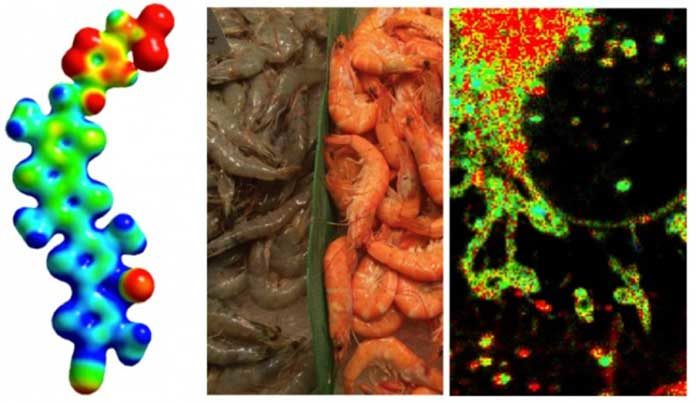Detecting physical force is quite difficult. Imaging the physical forces that act in living cells remains one of the main mysteries of current biology. Now, scientists at the University of Geneva have developed probes inspired by lobster cooking, they enable to enter into cells. Through this discovery, physical forces can be imaged live inside the cells.
Stefan Matile, Professor in the Department of Organic Chemistry at the Faculty of Science of the UNIGE and member of the NCCR said, “Our approach to creating tension probes was inspired by the color change of shrimp, crabs or lobsters during cooking. In live shrimp, the physical forces of the surrounding proteins flatten and polarize the carotenoid pigment, called astaxanthin, until it turns blue. During cooking, these proteins are unfolded and the lobster pigment can regain its natural dark orange color.”
“Intrigued by these crustaceans, the development of fluorescent probes operating on the same principle of planarization and polarization required about eight years of research.”
A year ago, the NCCR groups, at last, developed the first fluorescent probe fit for imaging the forces following up on the outer membrane, called the plasma membrane, of living cells. Requests for samples from in excess of 50 research facilities around the globe came in prompt reaction to the arrival of these outcomes, showing the significance of this breakthrough for life sciences. To satisfy this need, UNIGE’s force probes were propelled under the Flipper-TR® brand toward the finish of a year ago.
Aurélien Roux, a professor in the Department of Biochemistry at the Faculty of Science of the UNIGE and a member of the NCCR said, “The study of forces that apply outside the cells is not limited to chemical tools for fluorescence imaging. Cellular surfaces are accessible to physical tools like micropipettes, optical clamps, cantilevers of atomic force microscopes, etc. But these physical tools are obviously not applicable to the study of forces within cells.”
“Organelles such as mitochondria, responsible for energy production; endoplasmic reticulum, responsible for protein synthesis; endosomes, responsible for trafficking material to and within cells; or the nucleus, which stores genetic information, are simply beyond the reach of physical tools from outside.”
Aurélien Roux, a professor at the EPFL Institute of Physics said, “For the very first time, physical forces can be imaged live inside the cells. This new chemistry tool finally allows scientists to achieve what they have wanted to do for a very long time. These new probes now offer us the opportunity to tackle mechanobiology and revolutionize the study of life sciences.”
The study can be found in the Journal of the American Chemical Society.
